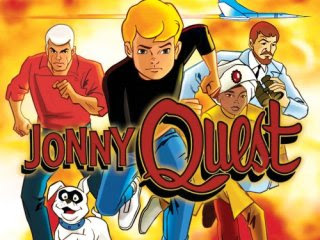As we advance as a society
we like to think we are becoming more enlightened, and perhaps that is the
case. There seems to be an expanding movement toward tolerance, and respecting
the heritage and lifestyle of others without passing judgment on them. These
are all good things.
And yet, in an effort to
protect everyone’s feelings, we have inevitably watered-down much of our pop
culture entertainment, including television. Subjects that once provided rich
source material for humor have become largely taboo. Certain words that were
used as punch lines, regardless of how poorly they reflected on the character
that says them, can no longer be spoken.
All in the Family is the most obvious example of how times have
changed. In its day this was a groundbreaking situation comedy that delivered
opposing viewpoints on real world issues, and unfiltered opinions that, while
sometimes uninformed, accurately reflected the way millions of Americans
thought at that time. Thirty years later, its brand of comedy would seem as
alien to a modern audience as a minstrel show.
However, All in the
Family was a series that always
courted controversy, and debuted with a disclaimer from CBS about the
incendiary nature of its content. There are many other, seemingly more
innocuous shows that still play every day in syndication, and are viewed as
more innocent relics from the classic TV era, that do not pass the political
correctness test today.
I Love Lucy
It may be the most iconic
situation comedy ever created, but one of its running gags was having Lucy mock
Ricky’s Cuban accent. People now lose their jobs for doing that. And yet, Sofia
Vergara’s accent on Modern Family
is still mined for laughs. Perhaps that show has earned so many brownie points
for inclusion in other areas that the arbiters of good taste let it pass.
The Honeymooners
“One of these days, Alice.
POW! Right in the kisser!” Doesn’t matter that Ralph Kramden was a blowhard who
loved his wife more than life itself, punch lines about punching women are no
longer acceptable. Of course, Alice was no better with all those cracks about Ralph's weight. Poor body image can promote low self esteem, you know.
The Andy Griffith Show
Otis the drunk? When
alcoholism is such a serious problem? It’s a disease, not a weakness, and
they’re making fun of it. If that sounds silly, think of the arguments about
violence on television, which draw the same parallels between scripted
entertainment and the real world.
Hogan’s Heroes
Germans are referred to as
“krauts” in almost every episode. Okay, they were Nazis, but still.
I Dream of Jeannie
This is a series about a
woman of middle-eastern descent who functions as a servant to an American military
man, and refers to him as “Master.” Shows like this are to blame for 9/11.
The Beverly Hillbillies
Look at those ignorant
Clampetts, advancing all those negative southern stereotypes with their
critters and their ill-fitting clothes and moonshine swilling. And isn’t
“hillbilly” a pejorative word?
Underdog
There’s no such thing as a
heroic pill-popper.
Three’s Company
This show was attacked in
the 1970s for its “lurid” scenario of a guy moving in with two girls. What
passed almost without comment was how Jack Tripper pretended to be gay so
landlord Stanley Roper would let him stay. His exaggerated gestures and lisping
delivery would have put him on the GLAAD enemies list today.
I could go on, but you get
the point. Finding that line between sensitivity and silliness is harder than
it appears. I find some of the things that others view as offensive to be
ludicrous – but I don’t share the life experience they bring into the
situation. However, while a blanket condemnation of all humor born from gender,
heritage, ethnicity, religion, orientation, etc. seems like a noble gesture, in
practice it would be not just impractical but impossible.
Censorship is not an
answer. Education might be. But in the end I think that while we all have the
right to be offended by a piece of entertainment if we so choose, we do not
have the right to a life free from such offenses, or to demand that what
offends us should be eradicated. Otherwise, there would be nothing left on
television.




.jpg)
